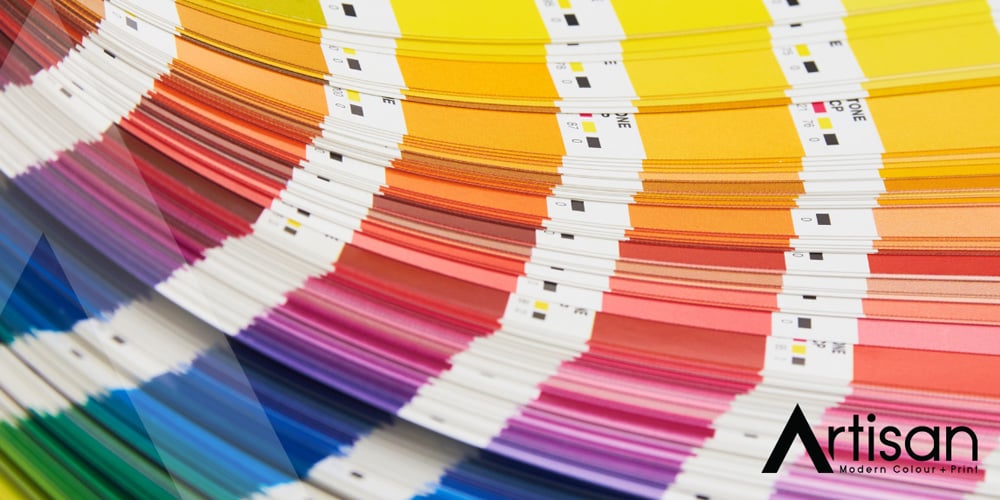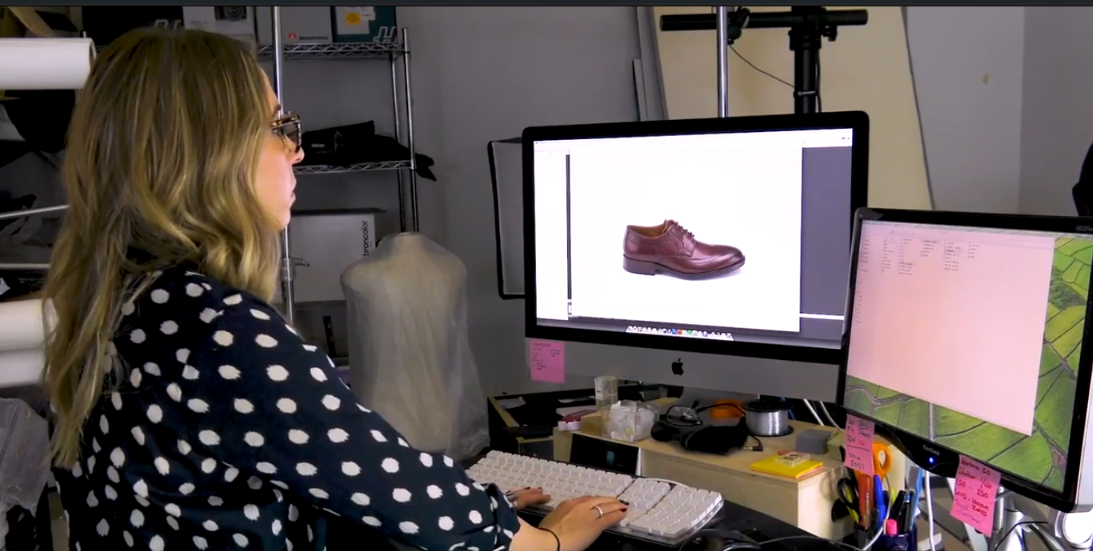How to Keep Your Brand's Colors Consistent in Both Print and Digital

Your brand's vibrant colors look stunning on the computer screen, but when you see the final printed version, does it differ from the digital mockup?


You’re not alone. While color consistency is critical for branding, it can be extremely complex (and frustrating) for marketing teams and businesses.
If you’re struggling to maintain your brand's colors across print and digital mediums, you’ve come to the right place. Here’s what you need to know about ensuring color consistency across all of your marketing assets.
- Why do colors look different in print than on a computer?
- What is color management?
- Why color management is more important than ever.
Why Do Colors Look Different in Print Than on a Computer?
There is a fundamental difference in color representation between digital displays (such as computer screens) and physical prints.
Computer screens and digital displays create colors by blending varying intensities of red, green, and blue light–a color model known as RGB. Printers, on the other hand, use four specific ink colors to recreate images–cyan, magenta, yellow, and black–a color model known as CMYK.
Achieving consistent color between digital design files created using the RGB color model and printed materials produced with CMYK inks can present a major challenge. The challenge stems from the different ways RGB and CMYK colors are generated.
RGB colors are meant for digital screens that emit light to make colors appear brighter. On the other hand, CMYK colors are for printing on paper, where a color’s appearance relies on ink absorption rather than light emission.
Another challenge comes from the fact that the CMYK color model is limited to approximately 16,000 color combinations, while the RGB color model can generate more than 16 million combinations. This means that designs created in the RGB color model have significantly more color combinations compared to those made with CMYK.

The color limitations that exist in CMYK printing and the associated mechanical processes of transferring ink to paper are why a process called color management becomes critical for color consistency.
What is Color Management?
Color management is a technical and complex process that helps ensure that the colors you see on your screen are as close as technically possible to the printed version. It’s like translating languages so that what you express in one language is accurately understood in another.
Central to color management are color profiles, which are standardized digital colorspaces that detail the color capabilities of specific devices.
 The International Color Consortium (ICC) profiles are the primary framework for this process. ICC profiles provide a universal standard that helps achieve consistent colors across print and digital mediums.
The International Color Consortium (ICC) profiles are the primary framework for this process. ICC profiles provide a universal standard that helps achieve consistent colors across print and digital mediums.
While the color management process is highly effective for color matching, there are certain variables–such as lighting conditions, printer inks, paper brightness, and the absorption rate of substrates–that can introduce complexities that require experienced manual color adjustments.
This is where standardized color systems like the Pantone Matching System (PMS) come into play.
PMS offers a collection of specific hues and shades, each with a unique code, ensuring that colors selected during the design phase can be precisely matched during printing, regardless of the medium.
Though Pantone colors are often more complex and costly to produce than CMYK, modern digital printing technologies, like the HP Indigo 7000 series, can provide near-Pantone accuracy without the direct need for Pantone-specific inks (even when working with complex or nuanced color schemes).
Color is complex, and there isn’t an exact science for color matching in the world of printing, which is why it’s crucial for businesses to work with a printing partner that is experienced in color management.
Why Color Management is More Important Than Ever
As more businesses integrate their digital and print marketing strategies, color management expertise across both mediums has become more important than ever. “You want your audience to recognize you, and that means you need to ensure color accuracy for any customer-facing part of your brand," said Lauren Carlstrom, COO of Oxygen Plus,
However, the reality is that the complexities of color management require advanced software, hardware, and skilled professionals. For many businesses, it's often easier to outsource the task of color management to an experienced partner.  This is why businesses across the nation have partnered with Artisan Colour for more than 25 years. We’re more than printers–we are color management experts.
This is why businesses across the nation have partnered with Artisan Colour for more than 25 years. We’re more than printers–we are color management experts.
We believe color accuracy it’s so important that it’s in our name.
Since our beginning in 1998 as one of the nation’s top print, catalog, and color management partners for brands such as Neiman Marcus, Patagonia, and Bergdorf Goodman, Artisan Colour has continuously invested in innovative solutions and expanded our service offerings. to provide comprehensive solutions
Today, we are proud to offer an extensive menu of services for businesses in our hometown of Scottsdale, AZ, and across the nation, including:
- Commercial Printing: Marketing collateral, catalogs, branded packaging, vehicle wraps, personalized printing, and specialty printing.
- Signage and Branding: Business signage, wall and window graphics, indoor and outdoor banners, trade shows and events, retail displays, and wall wraps.
- Direct Mail Marketing: Direct mail campaigns, personalized direct mail, mailing lists, and Informed Delivery.
- Marketing Fulfillment: Web-to-print, warehousing and storage, inventory management, kitting and assembly, and promotional products.
- Digital Services: Prepress, premedia, online image libraries, photography, graphic design, image retouching, and color management.
- Digital Marketing: Digital marketing strategy, graphic design, website design, content marketing, SEO, social media, software integrations, and Hubspot ecosystem management.
While our suite of services has expanded over the years, Artisan Colour’s commitment to quality and craftsmanship remains unchanged—ever driven by the artisan ethos that marked our beginning.
Contact our team of artisans today to learn more about the Artisan Colour difference.






